Honda CB500X Review
Honda hits the sweet spot
Motorcycle Review by Marty Thompson
Images by Colin Rosewarne & Trevor Hedge
Around 12 months ago, I had the opportunity to ride both the F and R incarnations (naked and faired respectively,) of Honda’s 500cc learner legal bikes. At the time, I also got to enjoy the larger capacity L.A.M.S. versions of the SV650 Suzuki and Yamaha MT-07 and XSR700.
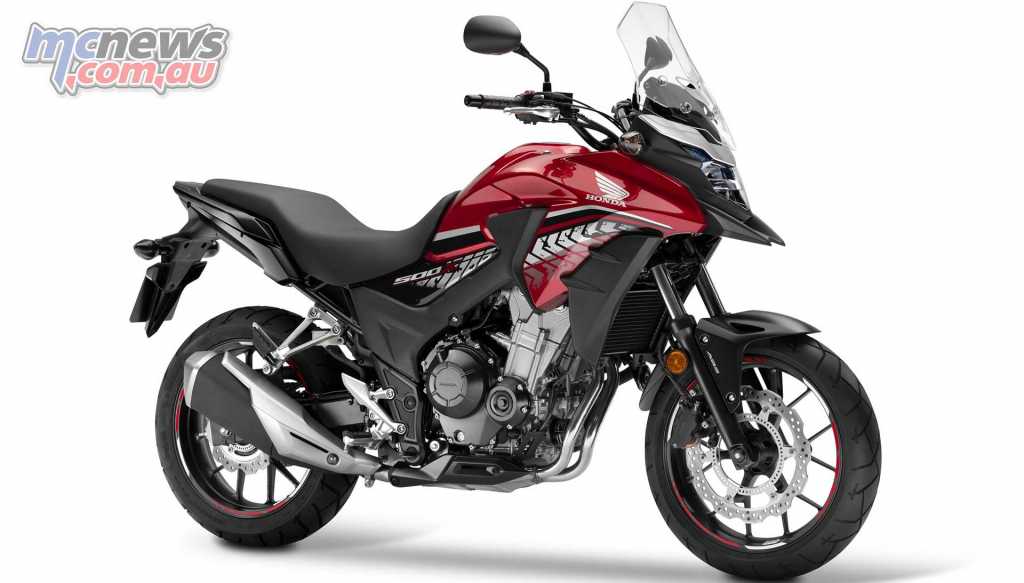
I recall being very surprised at just how good both the CB500F and CBR500R had been against the competition. So when Trev threw me the keys to Honda’s all-roads bike based on the same platform, I was pretty keen to experience what, if any, the differences the CB500X brought to the range.
The CB500X is a direct competitor to the likes of the Kawasaki Versys 650 and the Suzuki V-Strom 650, as both also come in learner legal formats, and while the larger capacity adds some advantages, there’s also some disadvantages.
The way in which some larger capacity bikes are restricted means that the bottom part of the rev range is very grunty, but then they hit a wall at about 5000rpm and forward progress from then on is comparatively slow.
For most of these bikes, the 5000rpm rev range equates to about 100km/h. Which means overtaking can be a task best attempted with careful forward planning. Not so with the Honda. This motor is almost flawlessly linear from idle to its 8500rpm redline. So overtaking is a much easier affair.
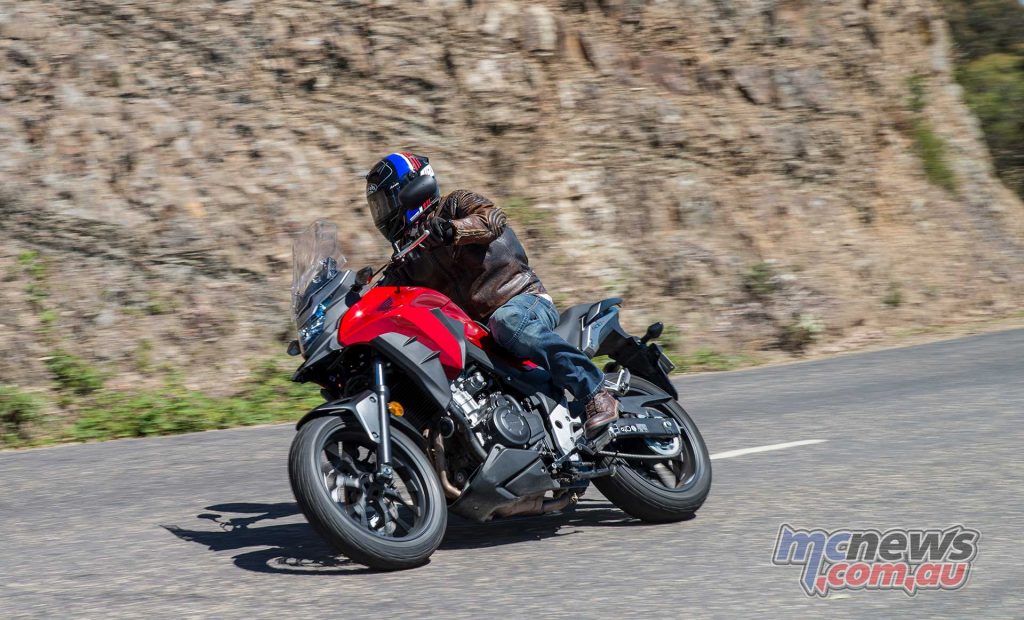
With the Honda, drop it down a gear or two and rapid acceleration is immediate. Even just using the bottom part of the rev range and opening the throttle in top gear still enables brisk overtakes from 100km/h. It’s a seriously impressive motor, which while not feeling fast, it is, deceptively so!
On paper, the specs look almost identical to its F and R siblings, with Honda claiming just on 47 horsepower from 471cc in-line twin-cylinder motor, the bum dyno reckons that feels about right.
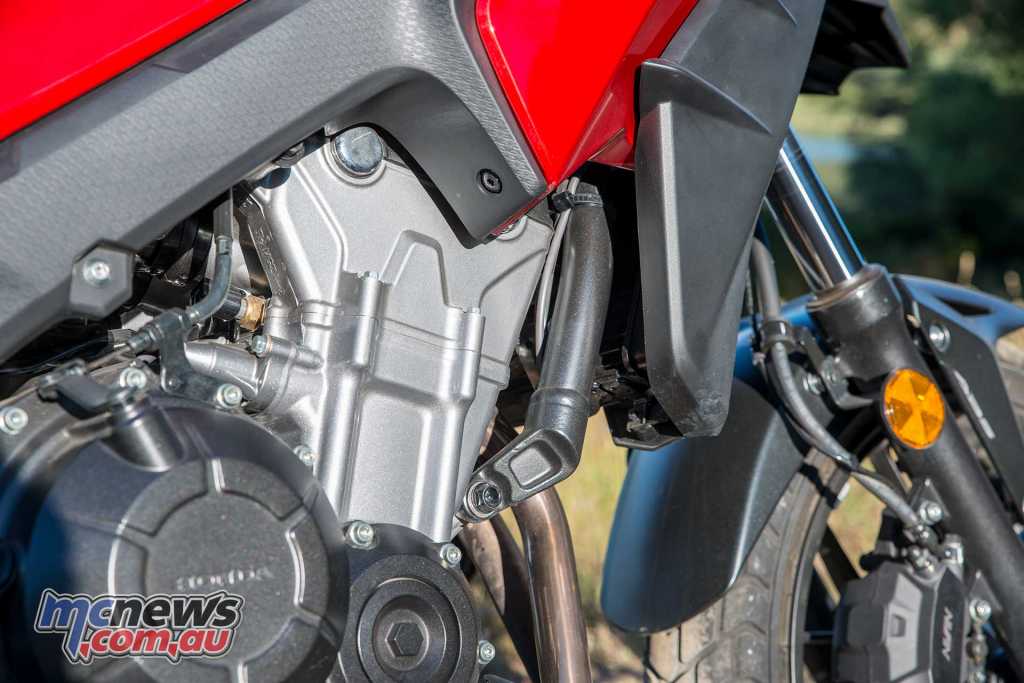
It is the same engine and chassis as the F and R versions, with different styling, more relaxed geometry/riding position, and a kerb weight of 195kg. But spec’ sheet onward is where the CB500X really differs.
Honda CB500X
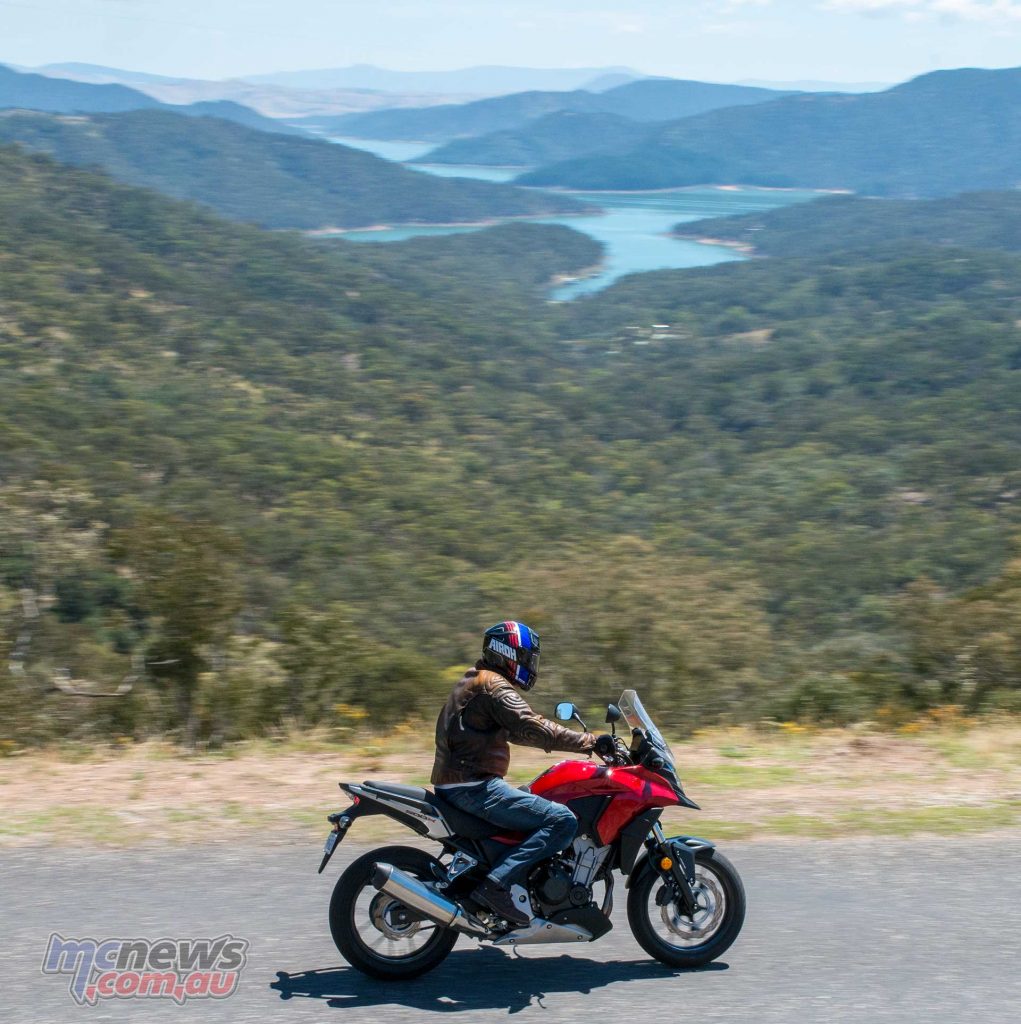
Hopping on to the CB500X, it is immediately apparent that Honda have worked hard at hiding that 195kg very well. It feels much lighter than the numbers suggest, and the centre of gravity feels relatively low. Which for a bike in the soft-roader, semi-upright, fully faired class is no easy feat. But create a light feeling bike they have.
It lifts off the side stand with ease and feels very light to manoeuvre around the garage or car park. The ride position is typical soft-roader fare, with nice wide, high bars. But again, Honda have taken great pains to ensure the seat height (810mm) is not overly tall, nor the seat to peg distance so short that it becomes cramped at any stage. I am 5’11” (180cm) and found the ride position to be very comfortable in all aspects.
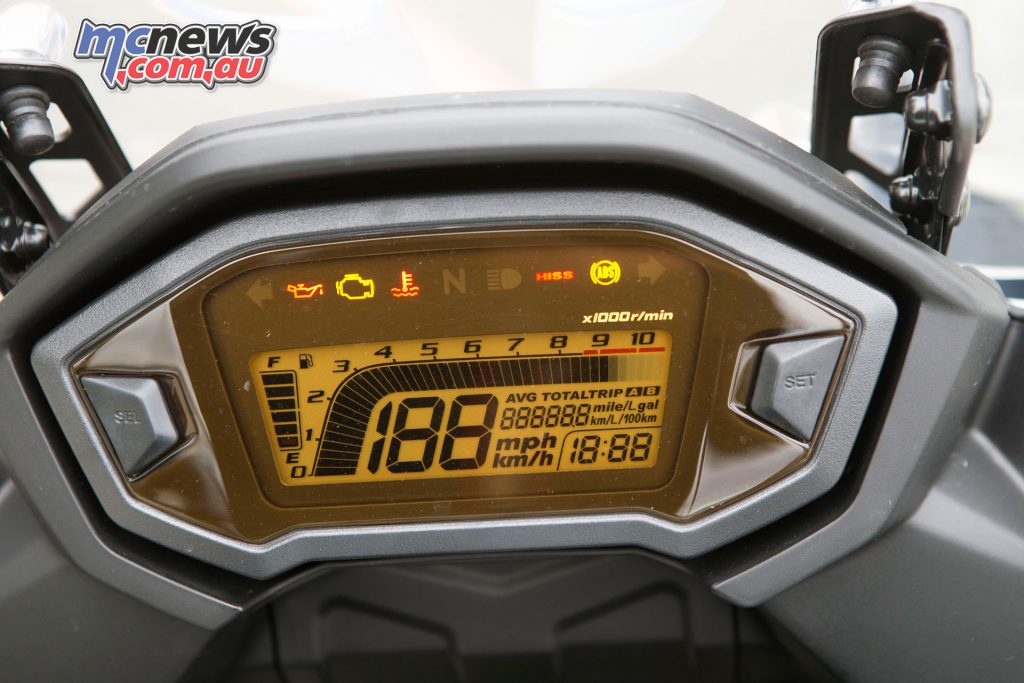
The greyscale digital instrumentation won’t win any awards for technology. But it is very clear and easy to read your speed, revs and fuel level at a glance. Dual trip meters and economy readings are also present while the only major omission is a gear position indicator, something that would have prove helpful to a learner rider.
The seat is a ripper… all day comfortable. I’d rate the seat as one of the best seats I’ve ever plonked my bum on. It’s nice and wide and comfy at the rear and thin at the front which enabled my feet to be placed completely flat on the ground at a stop, while also making it oh so comfy while riding. Kudos to Honda.
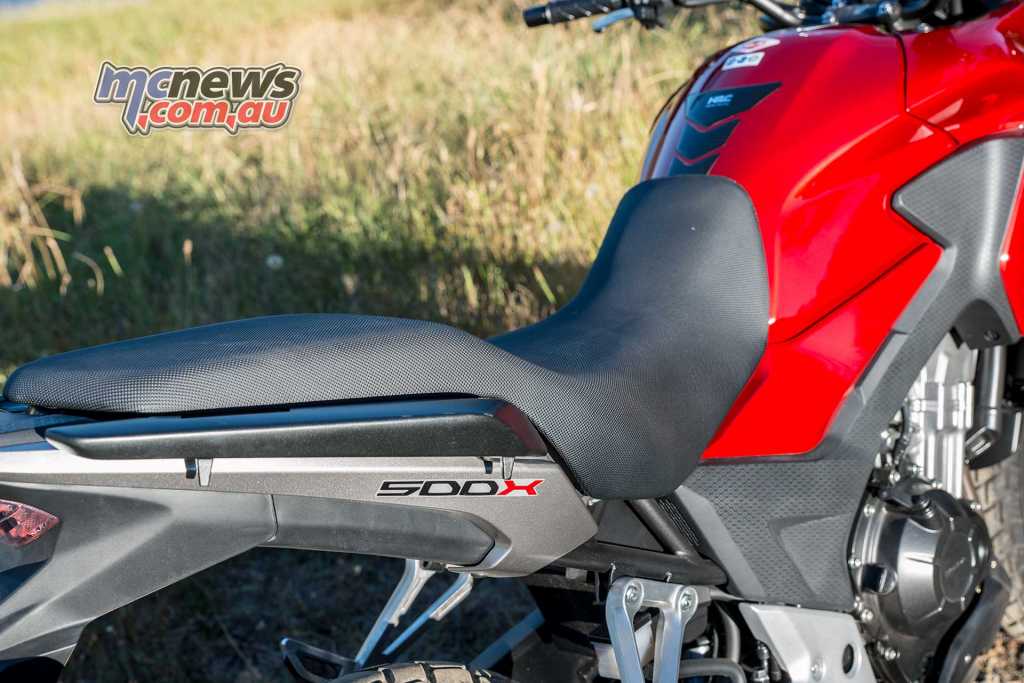
The clutch is a simple cable clutch and under my medium gloved hand felt great. There is no adjustment, but I can’t see anyone having issues with the reach. The brake lever has a five-way reach adjuster and again, I doubt anyone from the smallest handed person to riders with big gorilla hands would have issues finding a position that is comfortable for them.
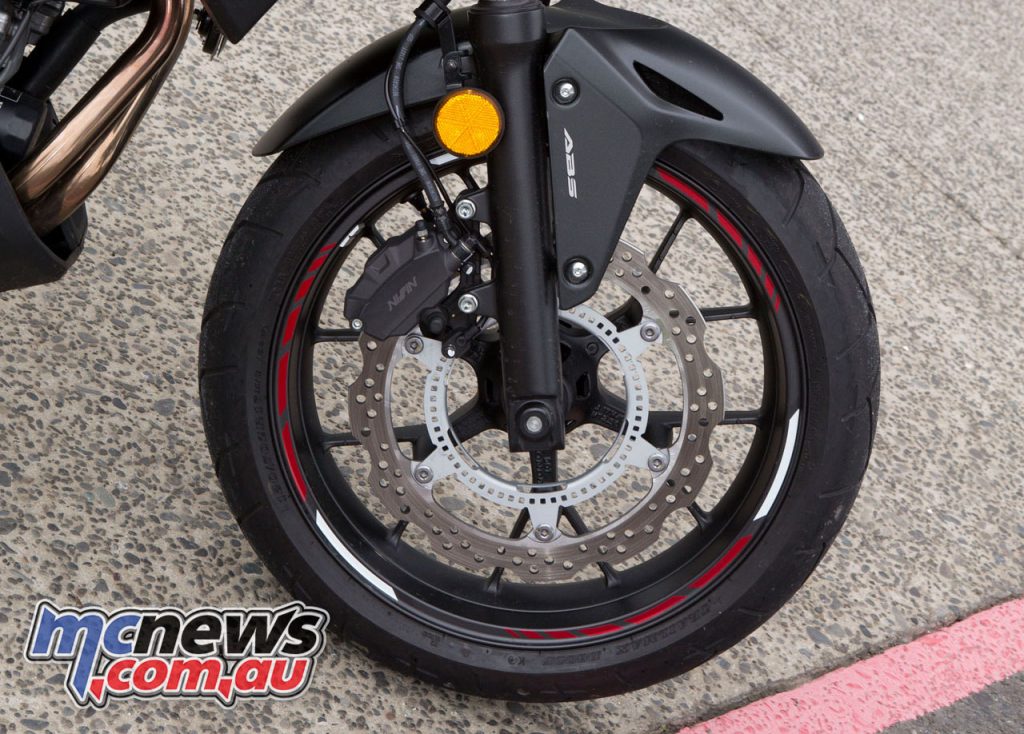
The brakes themselves, while being simple Nissin two-piston caliper brakes with ABS as standard, were plenty powerful with a smooth and progressive action. The more you squeezed, the quicker it stopped. Yet the initial bite won’t catch out newer riders. I found them to be a very good balance of power and feel.
Even pressing on up a twisty road chasing down three modern, well ridden large capacity sports bikes, the brakes worked well and at no point did I ever wish they had more power. I gave them a bit of a pasting for a period on the test loop and never got the ABS to activate nor experienced any fading. So to me, that speaks volumes for how well they work and for how good they feel. Proof that you don’t need mega dollar M50 Brembo brakes to make a bike stop well these days.
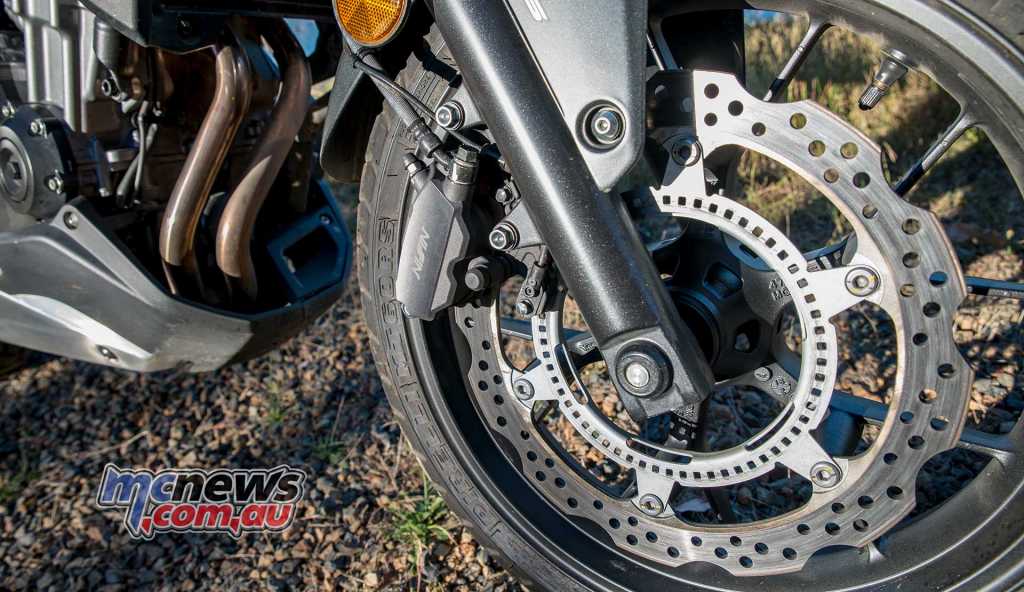
On The Road
Firing up the CB500X is a fuss free process. Either engage neutral and hit the button, or pull the clutch in and hit the button. The 500 twin comes alive with barely any vibration or noise. It immediately settles into a smooth idle, even when cold. It’s a very smooth little motor from idle all the way through as the engine climbs towards the 8500rpm redline.
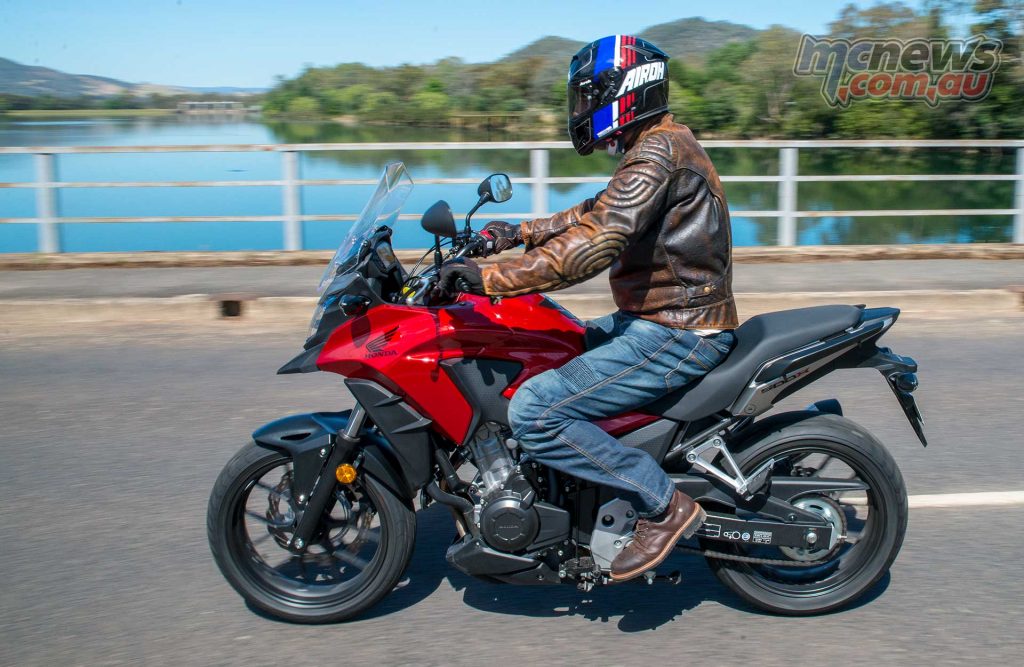
Even right at the top of that rev range, the little 500cc twin never gets vibey or annoying. At open road highway speeds, it’s a quiet and smooth ride. Unlike the R version I tested in 2016, the X had no annoying fairing buzzing or noises. It was super quiet and smooth behind the effective fairing and screen, the latter of which is manually adjustable through a plane of around 20m via a few screws.
If you are getting a hint that I liked this bike, you are on the money. I really did like this bike… a lot.. To the point where as an experienced rider, I could quite happily live with one, even though I have held an unrestricted license for over 30 years.
This motor is one of those donks that appears to have struck that balance which makes it powerful enough, yet enjoyable to use no matter where in the rev range you are. Over my many years in the auto game, I’ve sometimes come across other engines like this.
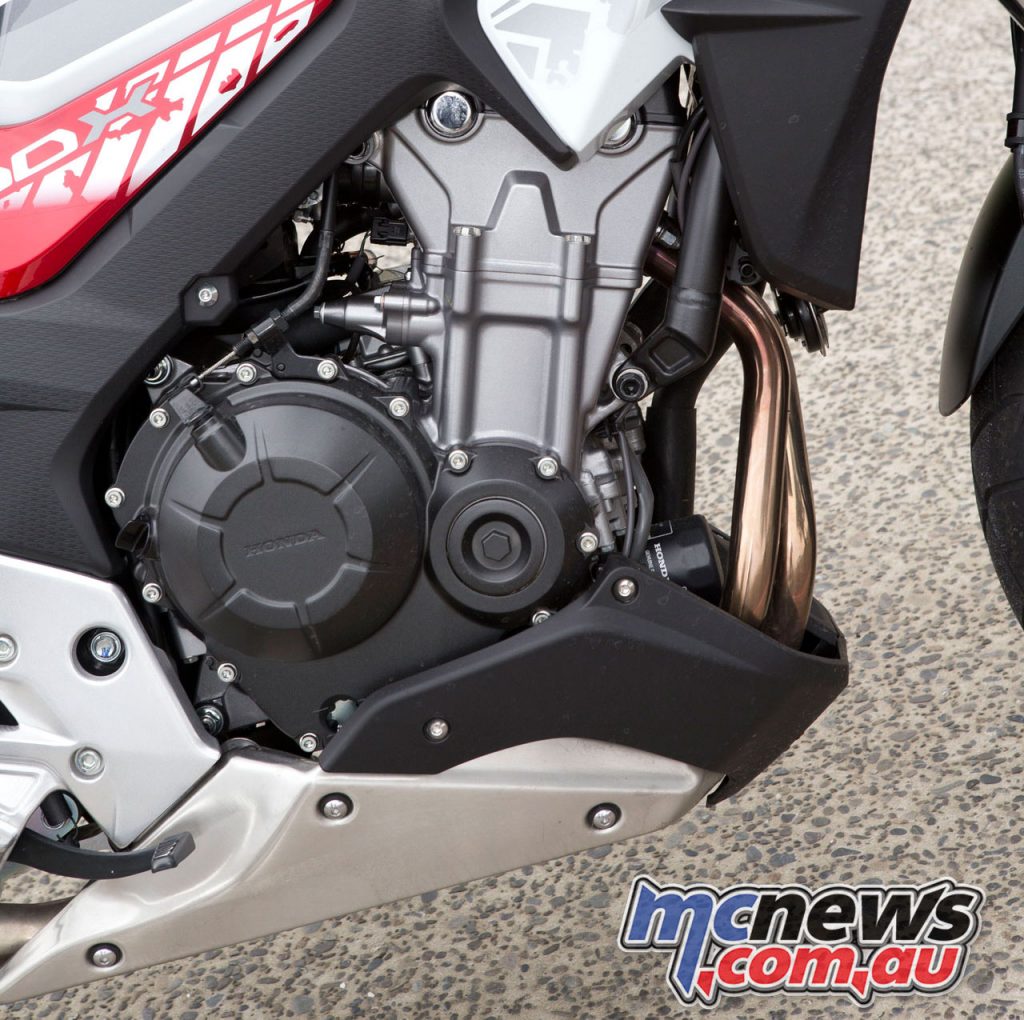
Back in the ’80s, the Nissan RB30 3L motor was a sweet little engine. Sure…it didn’t have the power of the 4.2, but it really was a super smooth motor that was lovely to use. Subaru in the ’90s added another 500cc to their 2L boxer motors that powered the Impreza and Forester models. Sure, it had more go but it was never as silky smooth and nice to use as the 2L was. The 750 V4 Honda is another example. A far nicer motor than its 1000cc sibling from the early ’80s. This motor is like the RB30, the 2L boxer and the 750 V4. It’s a cracking little engine no matter where in the rev range you are.
For the tech-heads, despite this engine being a clean-sheet design, it actually shares its 67mm bore size with the CBR600RR Supersports bike, which combines with a 66.8mm stroke to produce its 471cc capacity. It sports double-overhead cams, compact roller rockers with shimmed valved clearances and a 180-degree phased crankshaft with couple balancer.
Heading out onto the road for the first run, I was again reminded as to what was great about the F and R versions of this bike. That super smooth motor, with a very linear power delivery, no flat spots and isn’t peaky at all in its power delivery. Just an endless stream of power, which increases at the same rate as the revs rise.
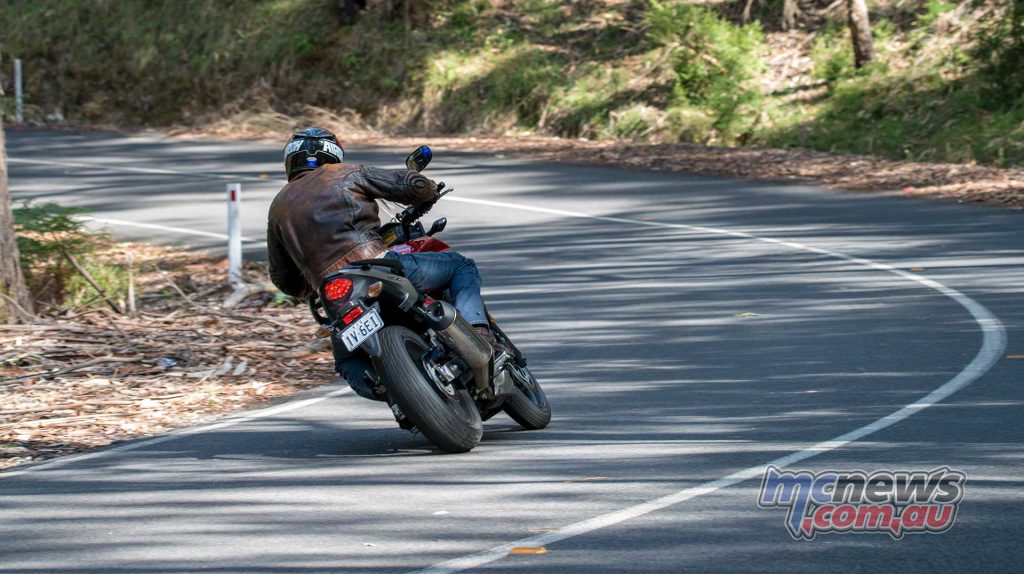
The more you rev it, the more power and torque it delivers. It doesn’t feel as grunty as the 650cc engines (up to 5000rpm) in some of the competition, but that is just the feel of the motor. The realities are that it is just as grunty. It’s just so smooth that you tend not to notice it, until you look down at the speedo and realise you are in the ‘lock it up sonny’ zone where your bike and license are immediately forfeited in most states.
An area that Honda should be congratulated on, is the suspension. I’ve been very critical of standard OEM suspension on new motorcycles in the past. My own personal bikes have almost always had the suspension upgraded to top end aftermarket units for the most part. However, the 500X suspension proved superb on the road.
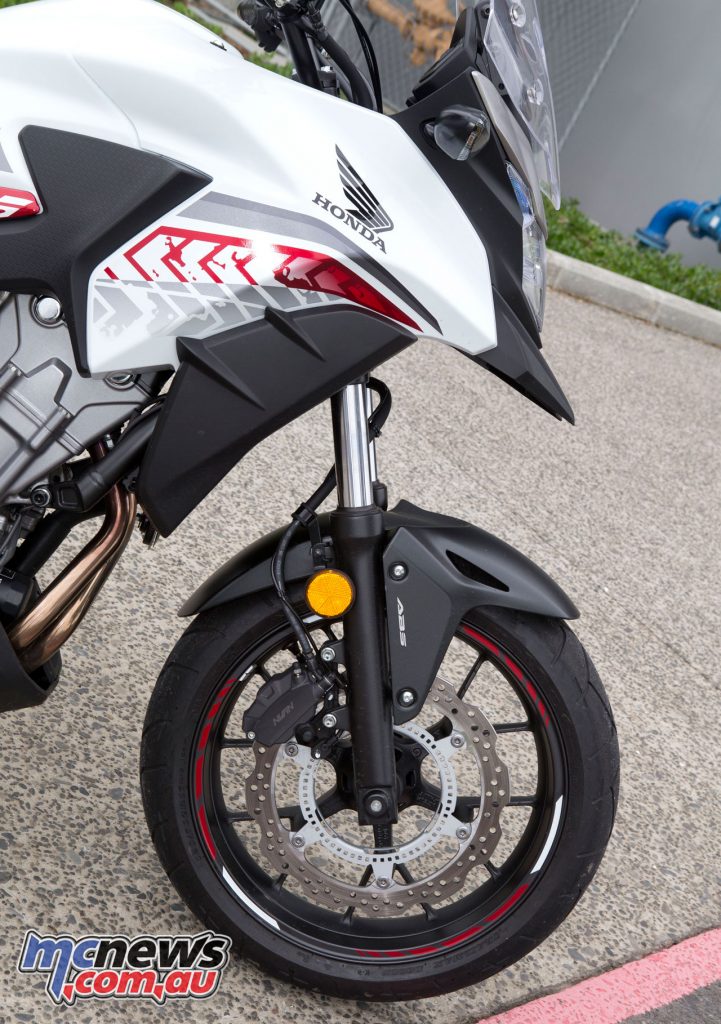
Honda have nailed the spring and damping rates on this bike. Around town the suspension is firm but never harsh and just soaks up bumps easily. It never puts any horrible jarring through to the rider and never rebounds back up or kicks you out of the seat. Yet, when out on the open road, it still manages to soak up all but the harshest of bumps and remains completely composed.
Even when really pressing on in boy racer mode on a twisty mountain road, the suspension was so good, that if I owned one I wouldn’t bother with spending money on upgrading it. That is something very rare at this low price point.
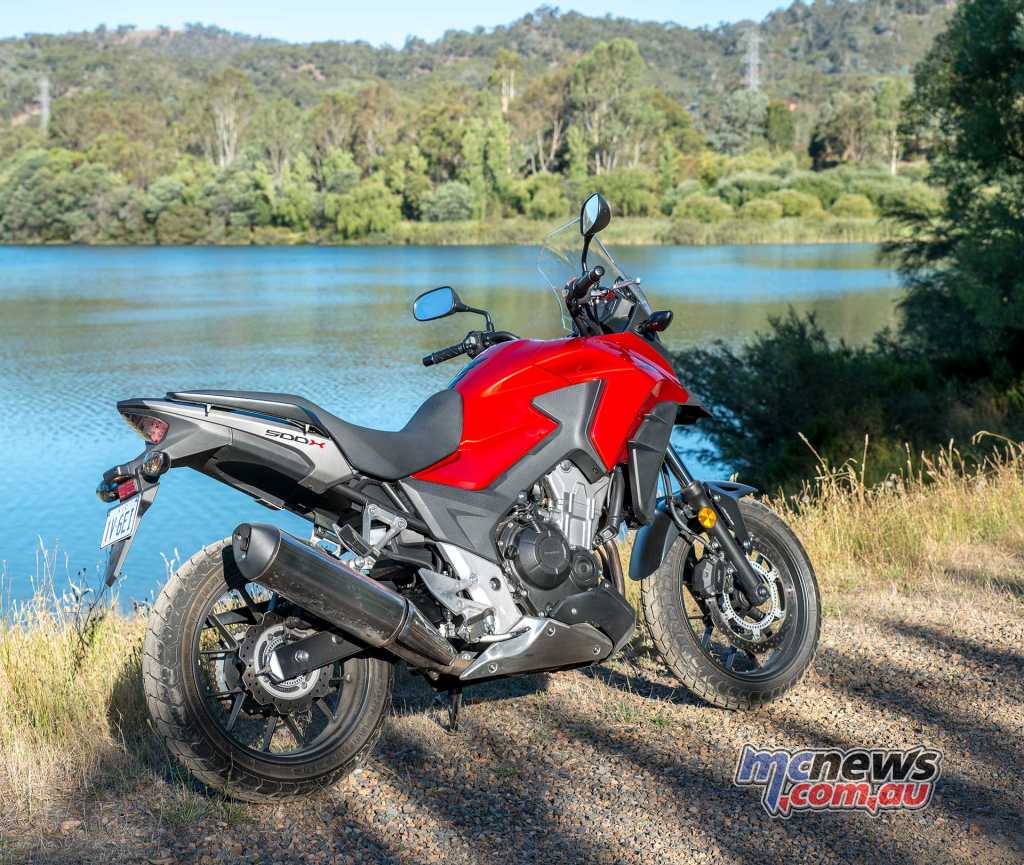
Geometry wise the CB500X has a tad more castor angle but a lot more trail than its R/F siblings. This is to add more stability for those that want to venture off-road and explore the adventure capabilities of the CB500X, which, of course, will always be limited by the 170mm of ground clearance (compared to 140mm on the R, and 155mm on the F), and the 17″ rims. It’s a soft dirt roader at best, thus suited for some gentle off-road riding, but not up to tackling anything too serious in the bush.
The standard factory settings were pretty much spot on for my 83kgs. It does have spring pre-load adjustment at both ends, should you be kilogram gifted, or need to carry a pillion or a large and heavy luggage load, it’s easily adjusted with a flat blade screw driver from the tool kit.
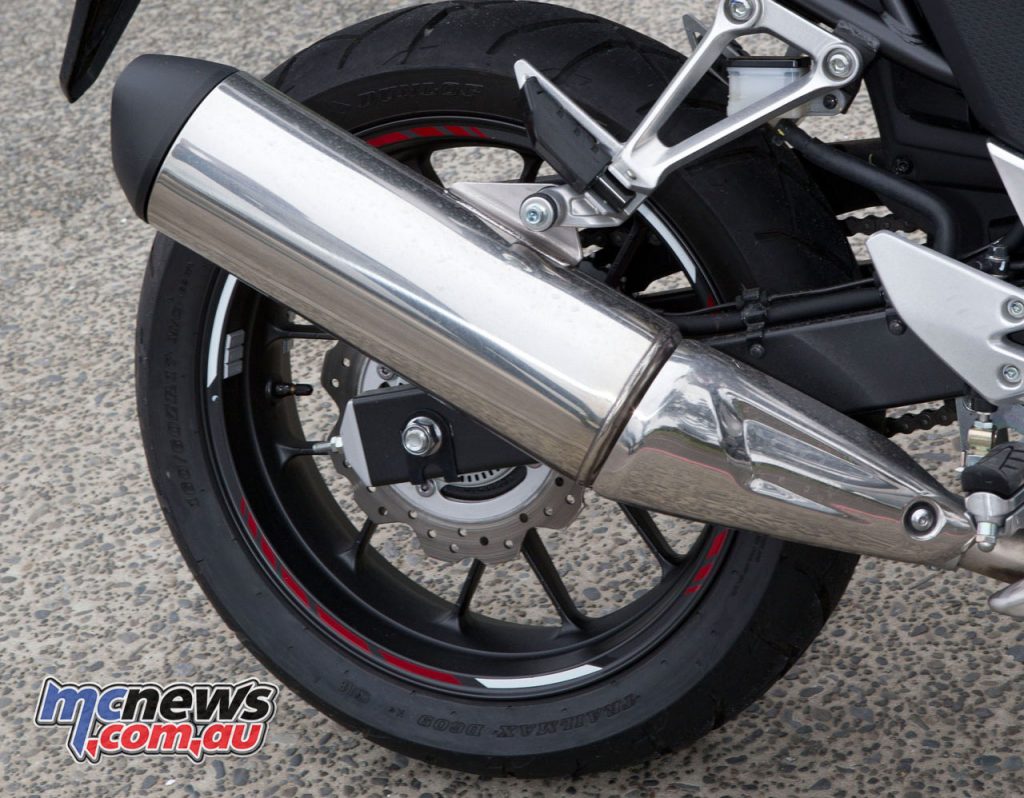
Now 90 per cent of this test was conducted in the mountains outside of Melbourne, with a couple of sections of open country highway, some hilly, undulating and sweepy roads and then about 130kms of what has to be one of the best sports bike roads in Oz. It also included a couple of sojourns into traffic and a short dirt road section.
Again, the suspension handled each and every challenge with simplistic ease. Honda have done a great job and regardless of if you are a learner or an experienced rider, I doubt you will find the suspension does anything at anytime that would give reason for concern. It just works!
The steering too is impressive. It turns in nicely with just a light push of the wide adventure style bars. It never over or under steers, not matter how slow or fast you are going and importantly, when leant over as far as the footpegs will allow (something 99 per cent of learners will not do), it holds a nice tight line and doesn’t run wide.
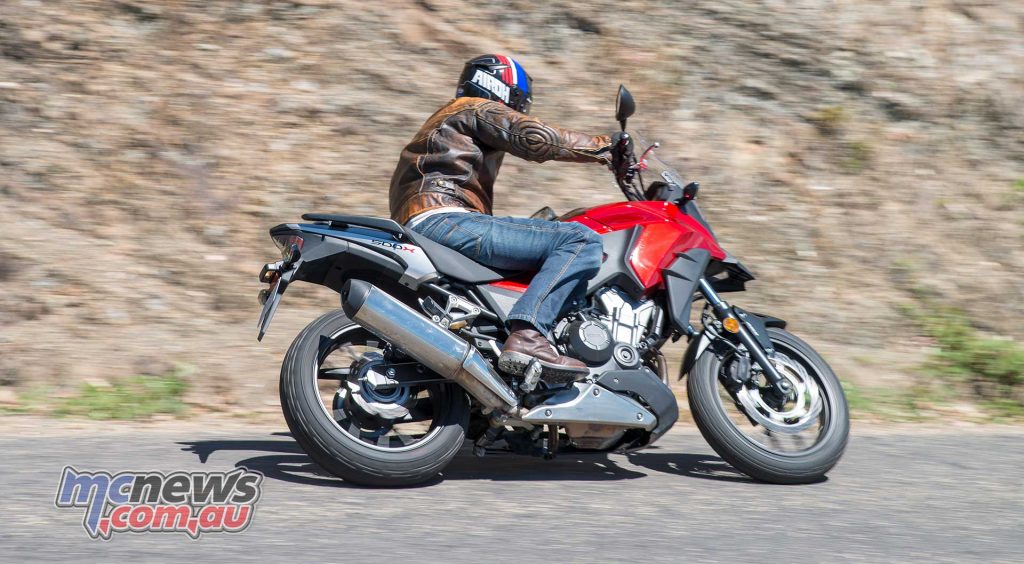
If I had to pick one thing that could be improved, it would be the gearbox. To be fair though, I’m just trying to find fault here and the more I rode this bike, the sweeter the gear shifting became. I think it just needed some kms on it to settle it in, as the shifting mechanism is lifted from the CBR600RR sportsbike and is generally very smooth in operation.
Being that this bike sits in that all-roads/adventure category, I took the opportunity to throw some dirt under the wheels. Honda had been kind enough to have the CB500X shod with Pirelli MT60 tyres, at the Ed’s request and again, it’s really hard to find fault with this bike. Sure, it’s never going to cope with being thrown around like an enduro bike, but it handled the dirt logging roads around my place without issue. It’s fairly dry and dusty at the moment and the roads are a tad skatey, even when on my enduro bike shod with full knobby tyres, but the Pirelli MT60’s did a bang up job of handling these conditions.
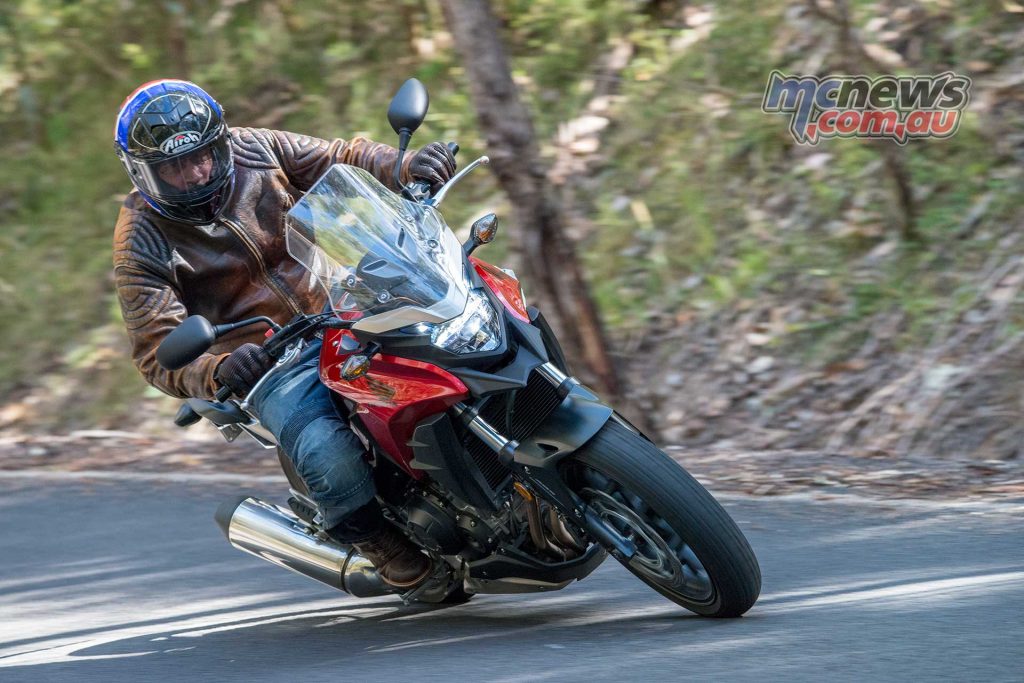
The CB500X steered well, handled the corrugations and never made me feel like I was about to crash. I even took it up the back of my property on what is pretty much a 4WD only track, including a little creek crossing and a fairly gnarly hill climb strewn with small rocks. At no point did I feel like maybe I shouldn’t have taken it there.
Sure, the suspension is going to bottom out if you try and jump it off erosion mounds. But I really don’t believe that is where this bike is aimed.
If you are looking to do the Simpson or the Cape, then a full on adventure bike is where you should be looking. But, to bang out a lap of Oz with the ability to tackle some dirt roads and light fire trails, this thing will do all that and probably a little more if you were sensible about the pace.
After completing all the above, the only thing I hadn’t attempted, was to take the 500X completely out of it’s comfort zone and really ripped up the tarmac. That was until a riding mate and his two brothers gave me this opportunity. They came up for a Christmas ride and I decided I would tag along and see how the little CB500X would fare up against a trio of full-on sports bikes.
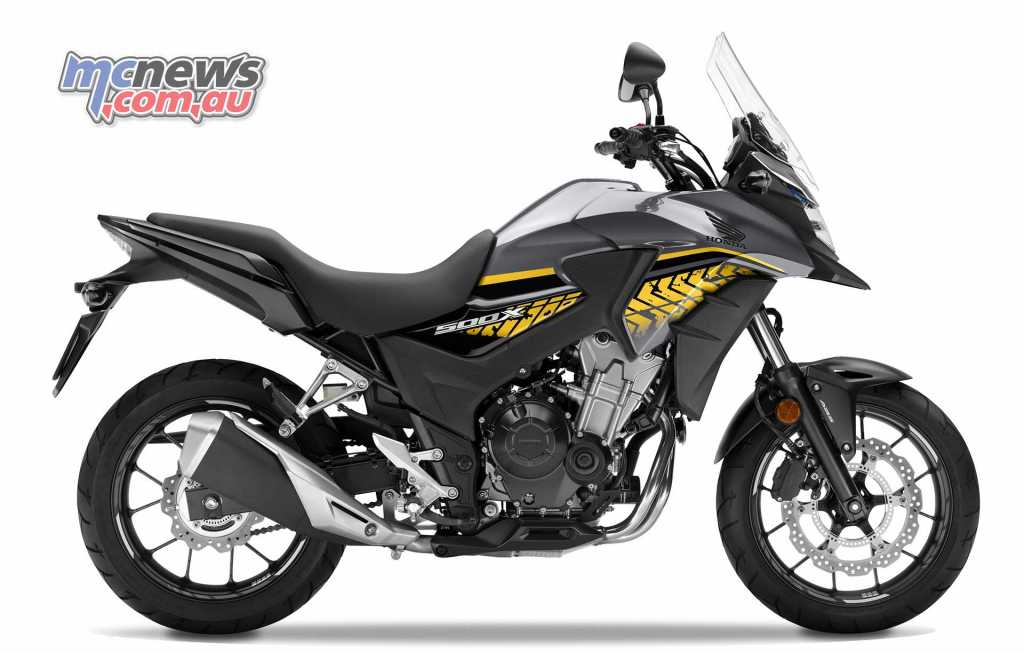
An Aprilia Tuono, MT-10SP and the last of the Rotax engined Buell sports bikes is what the Flying Gauchi brothers turned up on. All shod with modern sports or sports-touring rubber. All three of these boys can ride a bit good too!
I was expecting to be left for dead. But, to my surprise, the little Honda CB500X held it’s head high and kept pace with the more fancied opposition for a 60km run down one of the most challenging pieces of road Australia has to offer. It was here that I finally found the limits of the little Honda. keeping in mind that it was now operating far beyond the bike’s design brief.
Still, the CB500X handled riding with three well ridden sports bikes without ever getting out of shape or feeling like it was being over ridden. I wasn’t the only one surprised at how good the little Honda was, with the Gauchi boys all being completely shocked that the CB500X managed to stay with the group, even passing them at certain points along the way. They made comment to such effect when we stopped at the bottom to say our goodbyes. On 150km/h sweepers the CB500X wouldn’t have been in the game but in the tight and challenging terrain we were riding this learner legal Honda punched well outside its weight division.
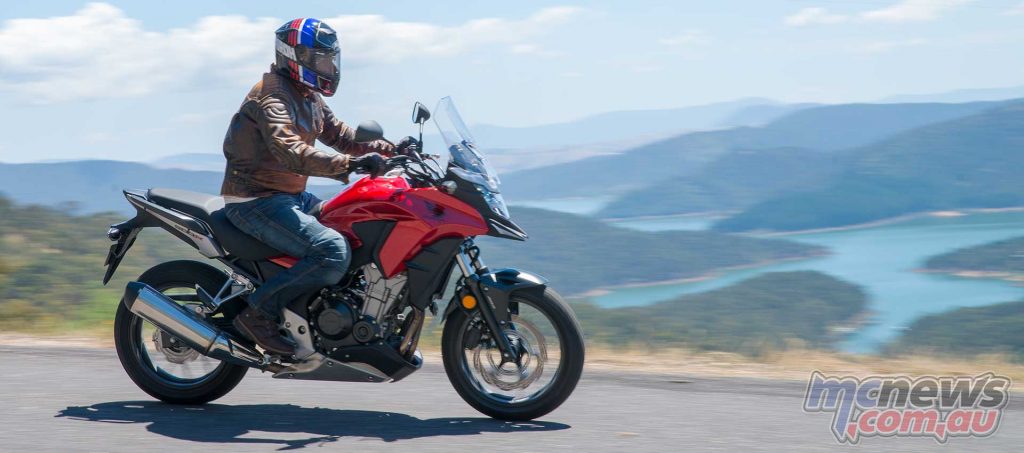
Conclusion
This is very much a different bike to the F and R model CB500’s. While a learner legal (LAMS) model, the CB500X is not a bike that should be restricted to the learner market. It’s an extremely capable bike, so much so that it is certainly worthy of serious consideration by more experienced riders too.
I see it as a bike which would be fantastic for returning riders, or riders who have reached the age where big heavy bikes start to become a little bit tiresome to manage at slow speeds. Or those who are just looking for some affordable fun. It’s a brilliantly versatile bike and I can see it satisfying all those I have mentioned, and more.
At the end of the day Honda’s CB500X is just one of those bikes, it’s more than the sum of it’s parts and the spec’ sheets don’t really tell the full story. It’s a bike which any learner rider would love, and wouldn’t necessarily need to upgrade once their license restriction period ended. I absolutely fell for it, and reckon Honda have really hit the sweet spot with the CB500X.
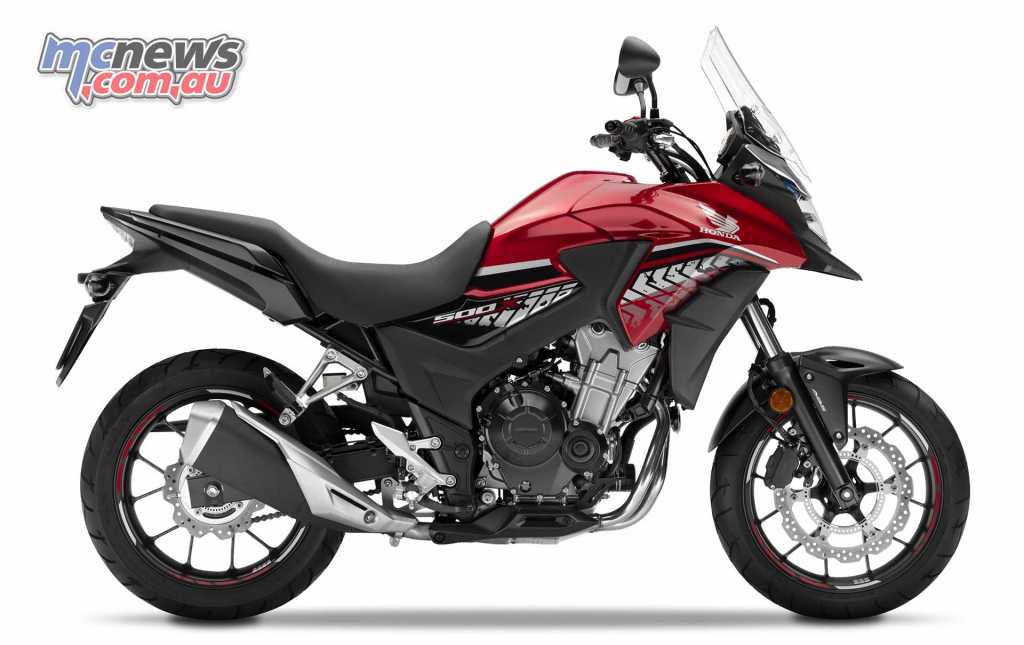
Honda CB500X Specifications
- Engine – 471cc, liquid-cooled parallel twin cylinder, DOHC, eight-valve four-stroke
- Bore x stroke – 67 x 66.8mm
- Compression – 10.7:1
- Power – 35kW[47hp]@8500rpm
- Torque – 43Nm@7000rpm
- Ignition – Computer-controlled digital transistorised with electronic advance
- Fuelling – Honda PGM-F1 EFI with twin 34mm Keihin throttle bodies
- Clutch – Wet, multi-plate
- Transmission – Six-speed, chain drive
- Frame – Tubular steel with load-bearing engine
- Front suspension – 41mm diameter conventional telescopic fork front, spring pre-load adjustment
- Rear suspension – Pro-Link with single spring/damper unit, spring pre-load adjustment rear
- Front brake – Single wave-pattern 320mm front disc and twin piston Nissin caliper front, ABS
- Rear brake – Single 240mm wave-pattern disc and single piston Nissin caliper rear, ABS
- Wheels – Aluminium alloy with Y-section spokes, 3.5 x 17in front; 4.5 x 17in rear
- Tyres – Pirelli Scorpion Trail, 120/70-17 front; 160/60-17 rear
- DIMENSIONS
- Seat height – 810mm
- Ground clearance – 170mm
- Wheelbase – 1421mm
- Rake/trail – 26.5°/108mm
- Fuel capacity – 17.5 litres
- Kerb weight – 196kg
- Price – $7,699 +ORC
- Contact – www.motorcycles.honda.com.au























